1848 was a significant year not just as the famous Year of Revolutions, but also for a number of noteworthy books (Stoddart 1998) which had a profound effect on our understanding of archaeological evidence: Layard’s Nineveh, Dennis’ Cities and Cemeteries of Etruria and Squier and Davis’ Ancient Monuments of the Mississippi valley, not forgetting Marx’s Communist Manifesto which provided new potential for interpretation. In the same year, Magdalene antiquarian and future visitor of the college, Richard Neville made his own substantial contribution to the record of past.
Neville, R. C. 1848. Sepulchra exposita, or an account of the opening of some barrows: with remarks upon miscellaneous antiquities; discovered in the neighbourhood of Audley End, Essex. Saffron Walden: G. Youngman.
This was followed by another contribution, once he had succeeded to the peerage and the visitorship.
Braybrooke, R. C. 1852. Saxon obsequies: illustrated by ornaments and weapons discovered by the Hon. R.C. Neville, in a cemetery near Little Wilbraham, Cambridgeshire, during the autumn of 1851. London: John Murray.
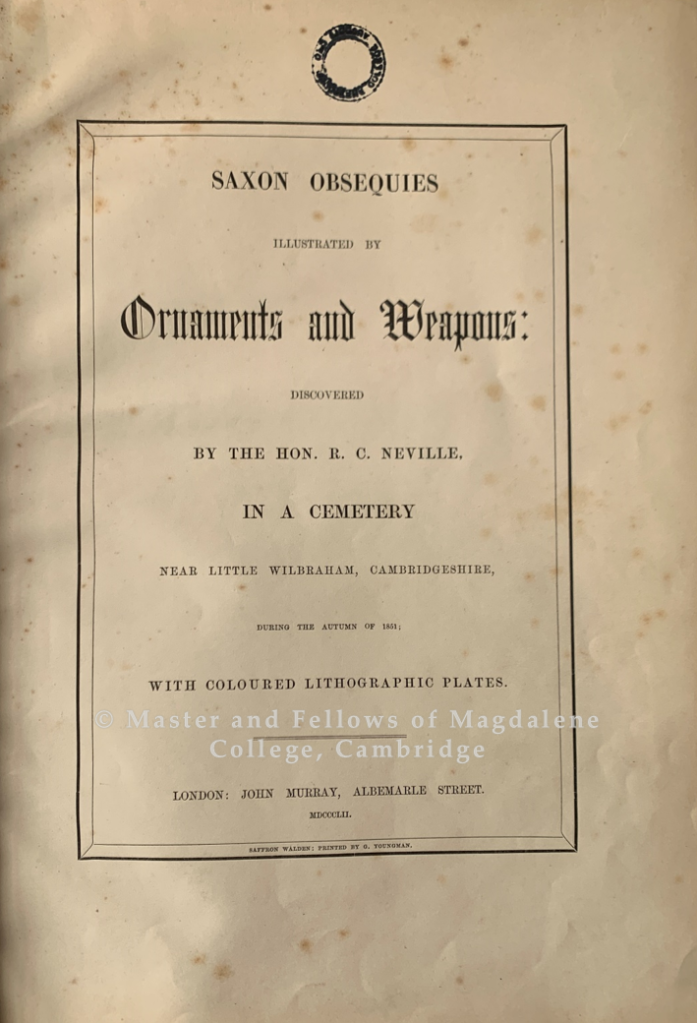
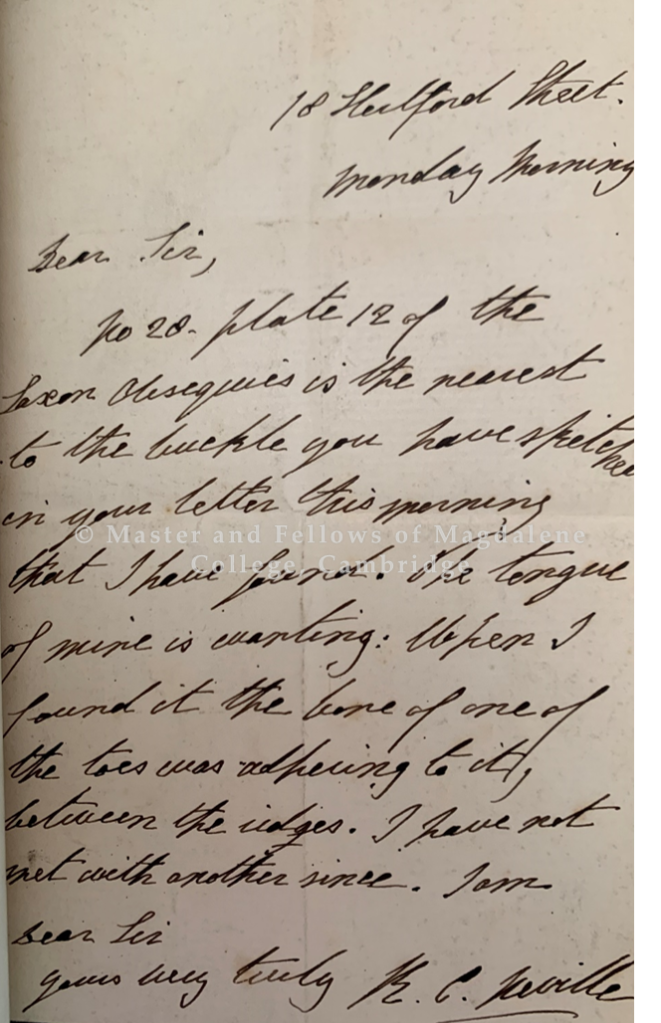
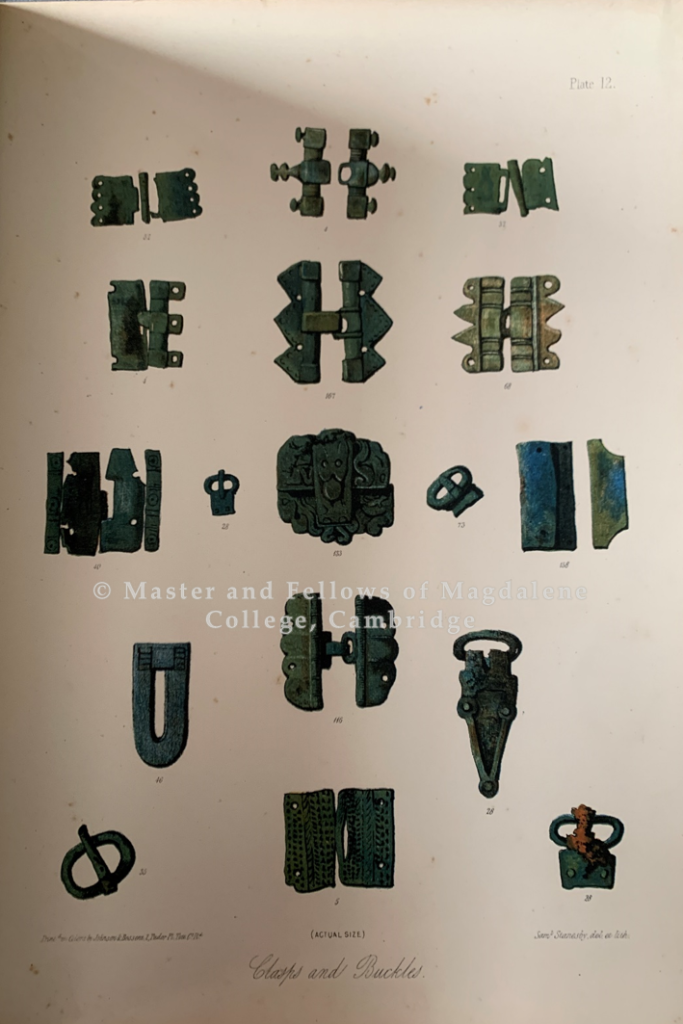
This very book, Old Library H.10.1a, was proudly owned by the second distinguished Magdalene archaeologist illustrated here, Sir Cyril Fox, and presented to the college by his widow Lady Aileen Fox, bearing a bookplate on upper endpaper: “Magdalene College Cambridge Ex Libris Sir Cyril Fox Honorary Fellow, presented by Lady Aileen Fox”. The books by Neville were keystones for Cyril Fox’s early contribution to archaeology, since the collections of Audley End formed the heart of the emerging Archaeology and Anthropology Museum and these same collections provided the data for Cyril Fox’s study of the Cambridge area:
Fox, C. 1923. The archaeology of the Cambridge Region. A topographical study of the Bronze, Early Iron, Roman and Anglo-Saxon Ages, with an introductory note on the Neolithic Age. Cambridge: The University Press.
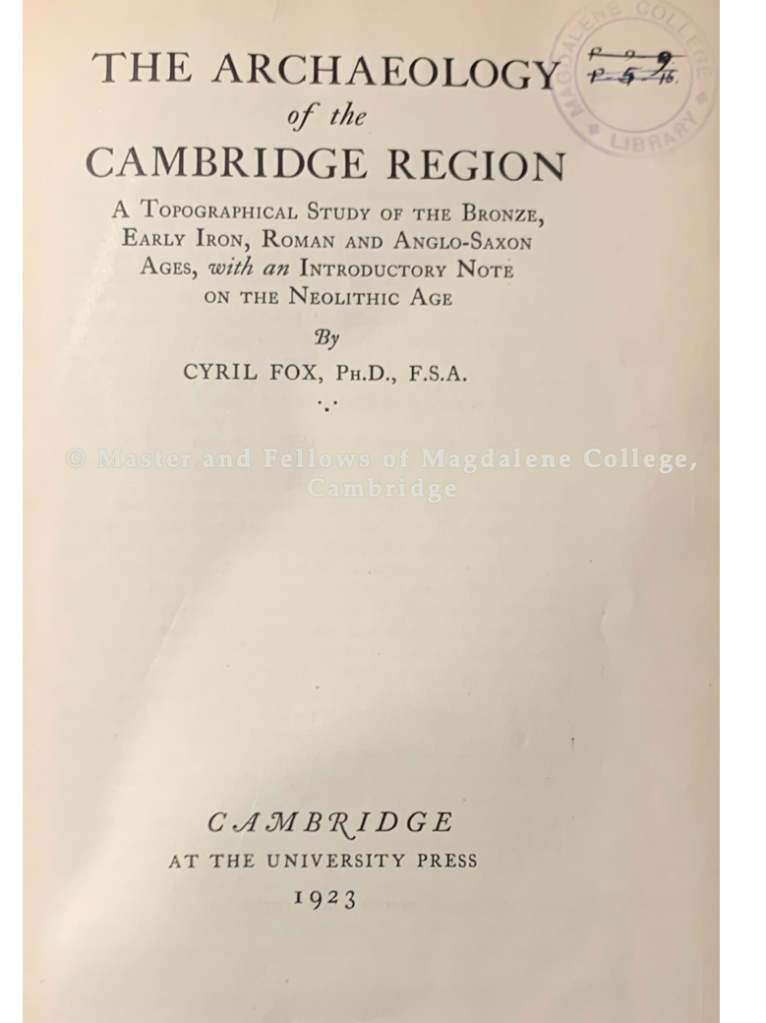

This book was presented by the author and contains his letter attached to the front endpaper of volume, dated November 30 1923. This volume can be properly considered the foundation of the modern tradition of landscape archaeology in England, whose impact profoundly affected British approaches in Italy, particularly through the British School at Rome (Potter & Stoddart 2001).
Lawrence Barfield was an important contributor to the landscape approach to prehistory in northern Italy, effectively founding a forensic scientific approach to precision fieldwork, alongside his Italian colleagues. He was chosen by Glyn Daniel to write the first detailed synthesis of the North in the Thames & Hudson Peoples and Places Series. As a record of his distinction, a current PhD candidate, holds a studentship which bears his name.
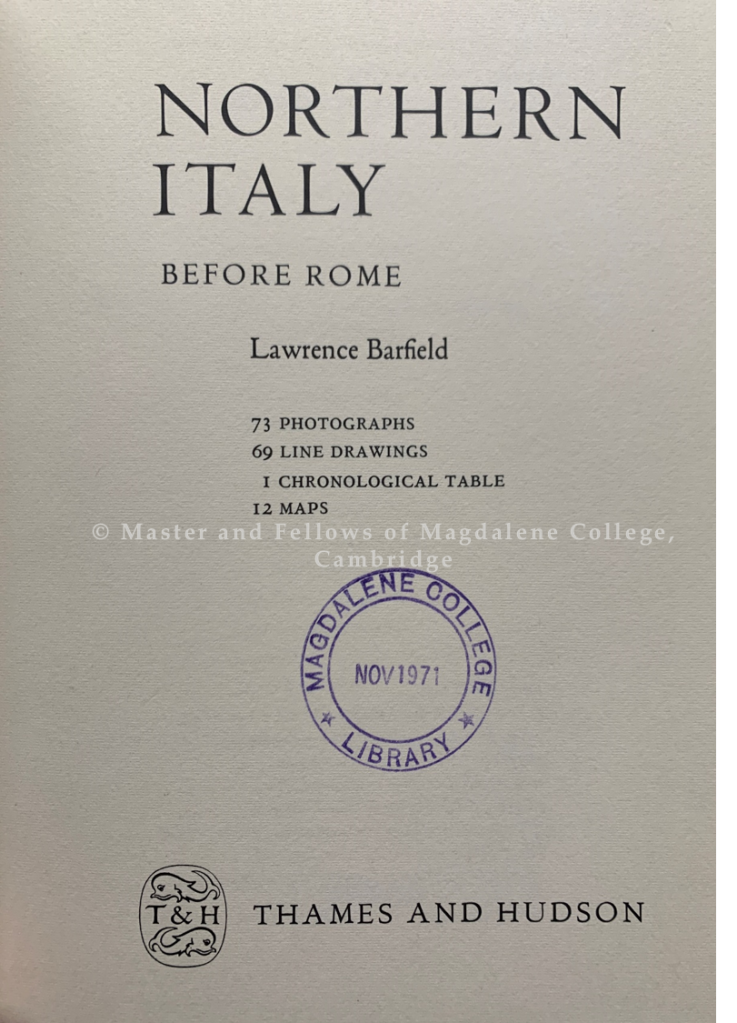
The authority of Magdalene archaeologists is not restricted to prehistory and the early Medieval period, but extended to the classical world.
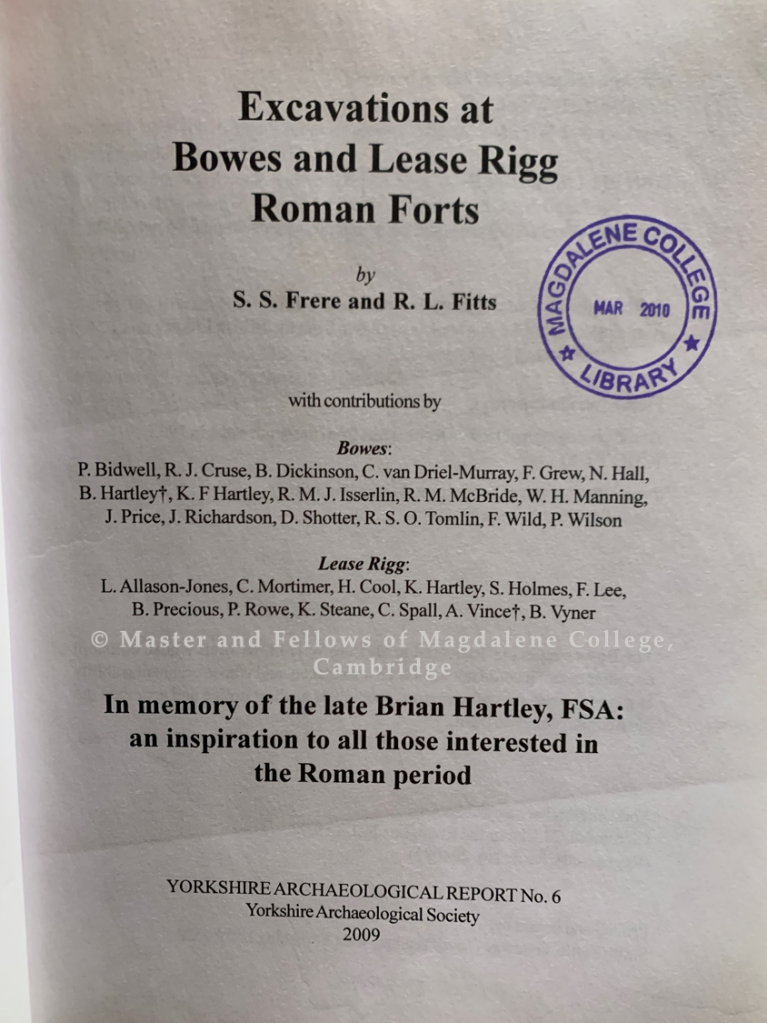
We are fortunate to have Sir John Boardman among our living honorary fellows, but here we record Prof. Sheppard Frere (Stoddart 2015) whose study of Britannia transformed knowledge of the now best studied province of the Roman empire. The library holds the report on one of his important excavations alongside his magisterial synthesis of the northern province, Britannia, a copy of which he presented to the college, based in no small part on data he collected from his numerous excavations (e.g. Verulamium (St. Albans), Canterbury another fort in Scotland, Strageath.
Frere, S. 1999. Britannia: a history of Roman Britain. (3rd ed., rev.) London: London: Folio Society.
Shepherd Frere had much of the modern in his approach since he was not only dedicated to detailed academic study and illuminating fieldwork, but also to informing the general public of his important discoveries and synthesis, born out of his early career as a school teacher at Epsom college, just after graduation Magdalene with a degree in Classics.
References
Stoddart, S. 1998. Special Section. A celebration of 1848. Antiquity 72 (278): 908-9.
Stoddart, S. 2015. Professor Sheppard S. Frere (1935). Magdalene College Magazine 59, 59
Potter, T. and Stoddart, S. 2001. A century of prehistory and landscape studies at the British School at Rome. Papers of the British School at Rome 69: 3-34.